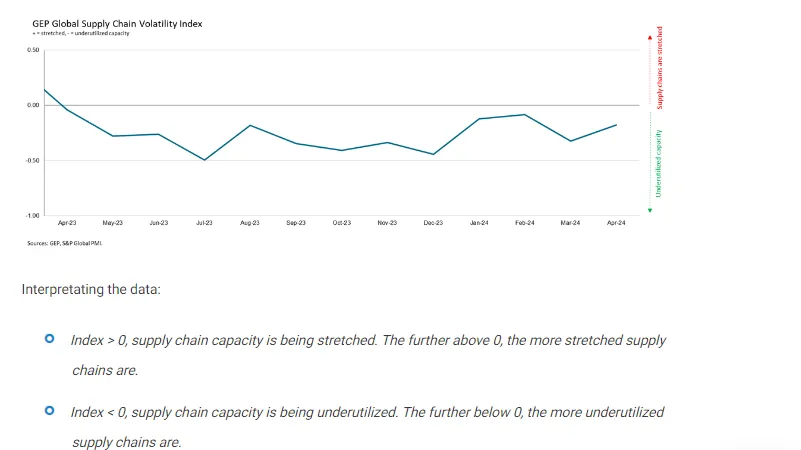
Asian supply chains stretched for the first time since January
Global supply chains are also operating near their full capacity.
Asian supply chains are operating at capacity for the first time in four months according to an industry tracker by GEP and S&P Global.
The GEP Supply Chain Volatility Index for Asia rose to 0.07 in April from -0.07 in March, indicating supply chains are stretched for the first time since January.
Input demand at the region’s factories remained strong, recording the highest increase in activity across global supply chains.
The report noted how procurement managers in South Korea, Vietnam, India and China ramped up their purchasing activity in April to meet growing orders. This trend increased pressure on the region’s suppliers.
READ MORE: China’s factory activity expands for sixth straight month
Issued monthly, the volatility index tracks demand conditions, shortages, transportation costs, inventories and backlogs of supply chains across the globe. A reading above 0 indicates supply chains are being stretched while a reading below 0 indicates factories are being underutilized, resulting in less volatility in the supply chains.
Worldwide, the Global GEP Supply Chain Volatility Index likewise improved to -0.18 in April from -0.32 the month prior, signalling supply chains are operating near their full capacity.
“After four years of supply shocks, inflation, stockpiling, and uncertainty, global supply chains are now operating in a Goldilocks zone, a steady state of full capacity, not expanding or contracting too quickly, which is excellent news for global suppliers and business,” said Mike Seitz, vice president at GEP Consulting.

















